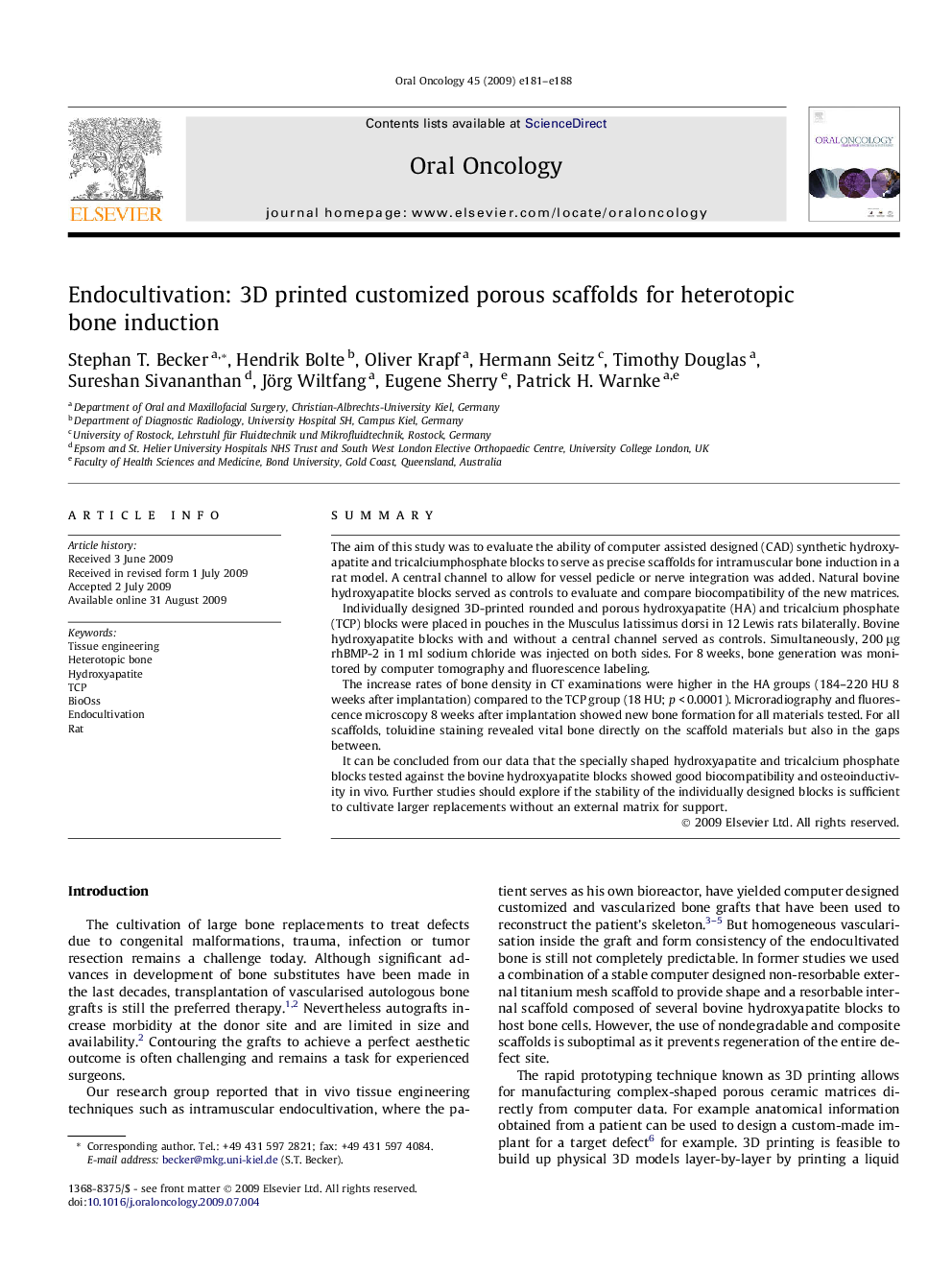| Article ID | Journal | Published Year | Pages | File Type |
|---|---|---|---|---|
| 3164786 | Oral Oncology | 2009 | 8 Pages |
SummaryThe aim of this study was to evaluate the ability of computer assisted designed (CAD) synthetic hydroxyapatite and tricalciumphosphate blocks to serve as precise scaffolds for intramuscular bone induction in a rat model. A central channel to allow for vessel pedicle or nerve integration was added. Natural bovine hydroxyapatite blocks served as controls to evaluate and compare biocompatibility of the new matrices.Individually designed 3D-printed rounded and porous hydroxyapatite (HA) and tricalcium phosphate (TCP) blocks were placed in pouches in the Musculus latissimus dorsi in 12 Lewis rats bilaterally. Bovine hydroxyapatite blocks with and without a central channel served as controls. Simultaneously, 200 μg rhBMP-2 in 1 ml sodium chloride was injected on both sides. For 8 weeks, bone generation was monitored by computer tomography and fluorescence labeling.The increase rates of bone density in CT examinations were higher in the HA groups (184–220 HU 8 weeks after implantation) compared to the TCP group (18 HU; p < 0.0001). Microradiography and fluorescence microscopy 8 weeks after implantation showed new bone formation for all materials tested. For all scaffolds, toluidine staining revealed vital bone directly on the scaffold materials but also in the gaps between.It can be concluded from our data that the specially shaped hydroxyapatite and tricalcium phosphate blocks tested against the bovine hydroxyapatite blocks showed good biocompatibility and osteoinductivity in vivo. Further studies should explore if the stability of the individually designed blocks is sufficient to cultivate larger replacements without an external matrix for support.
